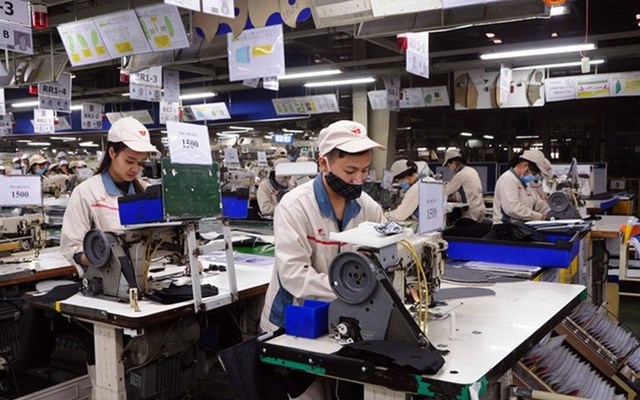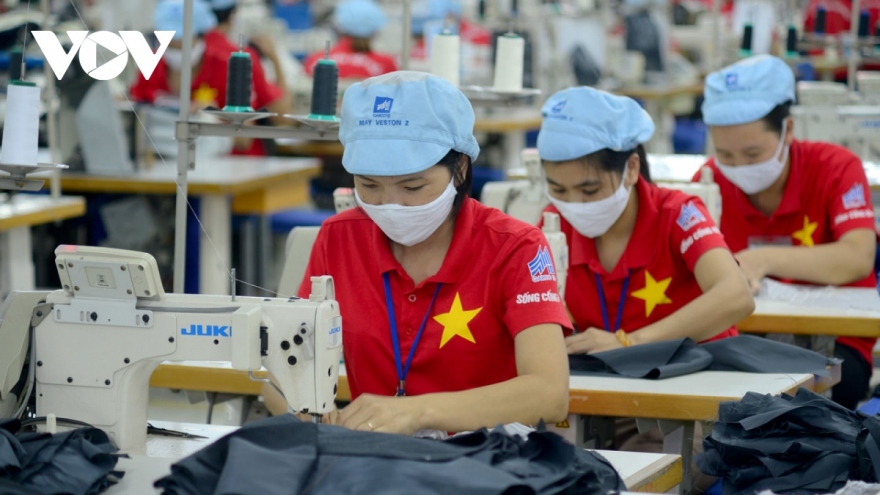Vietnamese PMI sees slight increase in December
VOV.VN - Vietnam’s Manufacturing Purchasing Managers' Index (PMI) rose slightly from 47.3 in November to 48.9 in December to reach a point of softer rate of deterioration, according to international independent credit rating data source and index provider Standard & Poor’s Global (S&P Global).
S&P Global reported that the index remained below the 50.0 no-change mark, thereby signaling a fourth consecutive monthly decline in terms of business conditions in the sector.
It outlined that the local manufacturing sector ended 2023 in contraction mode, adding that weak demand contributed to see a second successive monthly fall in terms of new orders, with output scaled back accordingly.
Meanwhile, purchasing activity and employment remained broadly unchanged. There were some reports that recent price rises had deterred customers, whilst firms responded by raising their charges only fractionally in December despite a further marked increase in input costs.
The health of the sector worsened throughout much of last year, improving only in February and August. The average PMI reading across the year was also at the lowest since the COVID-19 pandemic outbreak in 2020.
The latest decline occurring in operating conditions again reflected a subdued demand environment, with total new orders down for the second consecutive month in December.
The pace of reduction eased from that seen in November, however, as new export orders neared stabilisation.
Anecdotal evidence suggested that recent price rises have deterred customers and contributed to the latest reduction in new orders. Responding to these signs, manufacturers have moved to limit the extent to which they raised their selling prices at the end of the year, hiking charges only fractionally and to the least extent in the current five-month sequence of inflation.
The marginal nature of the rise in selling prices contrasted with that seen for input costs, which continued to increase markedly and at a pace that was little-changed from the nine-month high seen in November.
According to respondents, higher input costs often reflected increases taking place in prices for electricity and oil, plus exchange rate weakness. With new orders decreasing amid a challenging demand environment, manufacturers once again cut their production volumes in December, extending the current sequence of decline to four months.
Firms predicted that output will expand over the course of the coming year thanks to hopes of a recovery in demand both domestically and in export markets, plus business expansion plans. Sentiment hit a three-month high but remained below the series average.
Hopes for growth of output in the year ahead meant that firms kept their employment and purchasing activity broadly stable in December, despite falls in new orders. In both cases, the broad stability at the end of the year represented an improvement from modest reductions occurring in November. Stocks of inputs were also scaled back for the fourth month running, however.
A lack of demand for inputs and competition among suppliers has meant that lead times on the delivery of purchased items continued to shorten. That said, the latest improvement was only marginal, with stocks of finished goods being unchanged in December after having fallen in three consecutive months to November.
Some firms witnessed stocks of unsold products increase amid falling new orders, but others scaled back production accordingly to prevent a build-up of inventories. Meanwhile, backlogs of work increased for the first time in a year and to the greatest extent since May, 2022.
Andrew Harker, Economics Director at S&P Global Market Intelligence, said, “The final month of the year was indicative of the picture for much of 2023 in the Vietnamese manufacturing sector, with subdued demand limiting production volumes. Firms responded to demand weakness by restricting price rises in December to try and help stimulate new business. This was despite a further marked increase in their own input costs.”
"Attention now turns to the prospects for 2024, with firms still optimistic on balance that output will expand. This led to broad stability of employment and purchasing activity despite the reductions in new orders, as manufacturers attempt to maintain capacity in the hope of better days to come," he noted.



